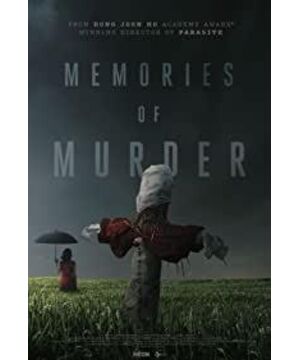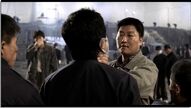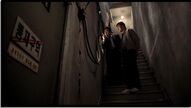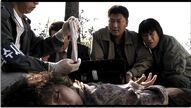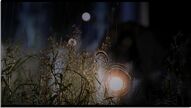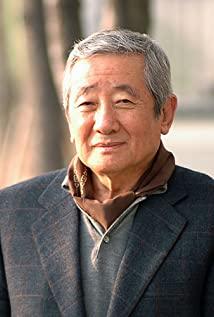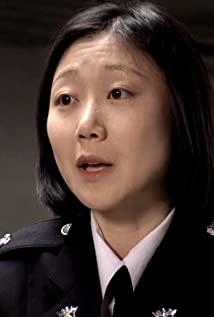South Korean director Bong Joon-ho made history. "Parasite" not only became South Korea's first Palme d'Or last year, but also smashed the Quartet at the 92nd Oscars, winning Best Picture, Best Director, and Best International Film in one fell swoop. And the four major awards for best original screenplay, becoming the first non-English best film in the 90-year history of the Oscars. work. All this is not accidental. Since his debut feature film "Kidnapping Dogs at the Door", Feng Junhao has been trying to create and deal with various types of films. With the help of the narrative framework of genre films, he can be an author and a filmmaker. matter. As a film-obsessed director who graduated with a major in sociology, he is proficient in the use of film audio-visual language and shoots strictly according to the drawn storyboards. It can be seen that Feng Junhao's works, especially "Parasite", are usually very neat in terms of audio-visual skills and drama, and are full of craftsmanship. Relatively speaking, his second work "Memories of Murder" is more comfortable and more obvious. Talented, and after a bit of innocence in his debut "Kidnapping the Door Dog," this talented genre master has created one of the most powerful films in Korean film history.
"Memories of Murder" Pull Notes
Act 1 (00:01:16-00:31:33)
first sequence build
1. Found a dead body
The first scene of the film begins with a child's perspective. The first shot is of a young boy catching a grasshopper, and then he looks away, and the tractor that Detective Park is sitting on comes into the picture. In the scene where Detective Park gets out of the car, it is still from the perspective of the little boy, starting with a close-up shot of a bottle full of grasshoppers that he hides behind his back, and panning until Detective Park and others walk in and follow the boy. Finally rocked to the ditch. Great directors usually give a lot of meaning to a shot, even if it's just a shot that drives the plot. It is worth noting that the grasshopper also appears as an image in the back shot of the female corpse, and the corpse of the victim is shown after shifting the focus. At the play level, the first scene of the film explains the background of the story, introduces the protagonist, and depicts the local customs to a certain extent.
2. Interrogation record
This scene is actually just a transition in the film. The time is short, but it is still expressive. A collection montage shows the ridiculous incompetence of the police at that time.
3. Found the second body
There is only one shot in the whole scene. It describes the crime scene environment from the perspective of Detective Park, and records the process of destroying the traces of the crime through two similar scene scheduling, which directly shows the chaos and disorder of the local police management and the indifference and low quality of the people. It also further shaped the character of Detective Park. This two-minute moving long shot is one of the most famous shots of the film. The powerful long shot is never purely dazzling, but complements the text with the help of its movement characteristics and single-shot nature.
4. The dialogue between Detective Park and his wife leads to Bai Guanghao (plot point)
The first two shots succinctly explain the role and identity of Agent Park's wife, while in the dialogue, a connection point that leads the story to the next sequence is thrown as an important information display, pay attention to Bong Joon-ho in this dialogue. How the camera and editing are handled in the bridge segment. At the beginning, it was just a back-and-forth cut from two fixed camera positions. When the wife talked about the "Murderer of the Bai Family Woman", she immediately switched to another point of view, and then when she talked about Bai Guanghao, she was filmed in a low camera position that was different from the previous two times. When the victim Xiangshu was brought back, he went back to the position where the conversation had just begun, but at this time, the previous editing was replaced with a lift-up camera, and gradually explained the information. When Detective Park learned that Guanghao was following the victim that night, the camera quickly changed everything. The double shot that comes to the panorama not only emphasizes the information visually, but also serves as a space for establishing the shot.
Second Sequence Guanghao
5. Detective Park arrested and forced to confess Guanghao
6. Detective Su appears
The audio-visual plan for Detective Su's appearance was completely treated as a suspect. In order to tease the audience, Feng Junhao also arranged for him to appear in a foggy day. First, he pushed a close-up of the scarecrow in red on the roadside, and then arranged for a panic-stricken passerby. Let Detective Su, who is outside the picture, invade the screen, feeling a strong sense of coercion, and then let Detective Park, who is not aware of it, beat him violently. This kind of cold and humorous handling is quite interesting. It not only subtly introduces another main character to further portray Detective Park, but also depicts the social atmosphere of panic among the people at that time.
7. Detective Park forged evidence and used it to extort a confession from Guanghao
The beauty here is Feng Junhao's handling of the composition. In the interrogation room, Agent Park, Agent Cao and Guanghao are in the foreground and occupy most of the screen, while Agent Park is in the background and placed in the corner of the screen. Even if the positions of the three of Detective Park changed later, the composition was still the same as before, and the depth of field also showed that Detective Su was concentrating on the investigation.
8. Threatening to extract a confession from Guanghao on the mountain
This scene opens with another long shot. Detectives Cao and Guanghao are in the foreground, and Detective Su is still in the corner of the background. In order to make the characters take up less space in the picture, they also make him crouch there and smoke. Then Detective Park entered the camera and entered the right side of the screen, and pushed Detective Cao's violent and ingenious actor scheduling to occupy the left side of the screen and dominated the plot. As the guided confession was carried out, the camera gradually moved to a close-up of the three people, and Detective Su drew a picture. In order to highlight the police's "guidance" behavior, the long shot was slowly pushed to a close-up of Detective Park's face after the end, which is very interesting. . In the subsequent interrogation, similar to the last scene of the previous sequence, the visual emphasis is also formed by adjusting the camera position and editing.
9. Detective Su's investigation
10. Crime drills
The opening scene is nearly one-and-a-half minutes long, and the narrative perspective is changed three times. The scene scheduling is very exquisite, and the playful and chaotic environment in the police station is vividly reflected. And it ends when Detective Su knows that Guanghao is not the murderer, but he is still taken away. This farce is shown to the audience through such a condensed and absurd long shot.
11. The director appears [plot point]
In just a few minutes of a scene, the key figure of the director was brought out. The director's doubts and anger towards the local police such as Detective Park were reflected in a few words and a few shots. The shots were well cut and the lines were well written. Song Kanghao also Perform well. This is also the first time for Detective Park to try to handle a case in a scientific way. I personally think that after this scene, the police began to move from disorder to order, and the plot developed with a turning point, so this is the connection point of the second act.
Act II (00:31:34-01:45:00)
The third sequence So Tae-yoon
12. Detective Su's investigation concluded that the rainy night and the red clothes led to the third victim
In the second shot of this scene, the four figures are actually on a horizontal line, but the camera is shot from a different angle, which is actually a diagonal composition. It was Detective Park and Detective Cao, and the last one occupying the least space on the screen was still Detective Su. The fourth shot is a double shot of Detective Su and the director, and then Detective Park enters the painting on the same side of Detective Su (right). On the same side of the cast, Feng Junhao visually established a "camp" with clever actor scheduling and composition. Later, when Detective Su told the conclusion of the investigation, the camera slowly panned to the right, and Park and Cao were almost ready to draw; Detective Park came up to make a few words, and the camera panned back, but was blocked by the director; The long shot of more than a minute then pans to the right to form a double shot, and finally pushes to the end of the close-up of Detective Su. Before that, Detective Su had had little influence on the case. In order to highlight this point, Bong Joon-ho also emphasized the composition of the two scenes. However, after this scene, Detective Su gradually became the main character. The lens language and text are implemented.
13. The third body found
The second shot of the scene starts with a long-range shot of Detective Su looking for a body in a rice field, then descends to a panoramic shot of Park and Cao who are chatting and playing, and finally rises to a long-range shot of the police finding the body. This long shot of more than one minute is also very ingenious. The contrast of one drop and one liter also explains two information: Detective Su found the body, Park and Cao are lazy and have low education, and they are also kind to them. Aspects are portrayed.
14. Have dinner at Guanghao's father's shop and apologize
Feng Junhao is a director who likes to make jokes, just like this scene followed by the scene where the corpse is found, through finely edited, the corpse is first revealed little by little, and the audience can bear it at this time, and then the last scene suddenly reveals the size of the corpse. Part of the body, followed by a close-up of the flesh-and-blood barbecue, for fear that the audience would not be disgusted, and made it a joke. The second shot that followed was close to a one-minute fixed-camera long shot (actually it was slightly panned as Guanghao’s father moved), and this single shot mainly described Guanghao’s father’s favor to the police. He and Detective Park apologize to Kwang-ho with fake shoes. In such a long shot with basically no movement of the camera, in order to keep the image flowing and not make the audience feel boring, Feng Junhao very cleverly arranged moving elements in the space of the painting, one is Guanghao's father outside the room, the other is Inside the secret door (I don't know how to describe it) Guanghao suddenly broke through the door. This is not the first time that this kind of flexible and ingenious technique has appeared. Previously, the interrogation room and the four people used it to increase the dynamic of the picture, but this is really wonderful, so I will just pull it out and talk about it.
15. Sing and drink (plot point)
The second shot of this scene is very classic. It not only further builds several characters and promotes the plot in the play, paving the way for another fight between Detective Su and Detective Park, but it is still quite exquisite in scene scheduling. This slow-moving shot lasts for more than three minutes, describing the minor conflicts between Detective Su and Detective Park from beginning to end. In addition, the drunk director and Detective Cao are both placed in the painting and replaced by long shots Regular head-to-head fights and clips, very subtly showing conflict and ending it.
The fourth sequence takes the initiative
16. Pretending to be a woman in red
17. The Fourth Victim
18. Discussing the case leads to a radio song
Another wave of Feng Junhao's scheduling and mirroring has to be played. Here is a one-and-a-half-minute comprehensive sports push mirror, which involves scene scheduling and composition changes. Most of Gao Ming’s long shots form a section on their own, and a single shot itself is a small scene, and this long shot further adjusts the composition and scene on this basis, and re-emphasizes the two “camps” while continuing to go deep into the story quietly. The presence. The last shot of the scene is a panoramic re-creation shot, or a fixed shot with a duration of more than a minute. Feng Junhao arranged for Detective Park to enter and exit the painting in a wheelchair. This method of increasing the flow of the image is similar to the previous Guanghao. It's a good fight to break out.
19. Separate investigations
20. Spells
21. Discover Qiao Bingchun's pursuit (plot point)
First, the narrative time was lengthened, and then a large number of sports shots, multi-camera shooting and fast editing were used to express the chase scene. From the slight narrative sound before the chase to the non-narrative sound with a strong sense of rhythm during the chase, there is a degree of relaxation, although It's common practice but still very effective here.
The fifth sequence of Qiao Bingchun
22. Interrogation Investigation
23. The criminal process of extracting a confession
In the last shot, Qiao Bingchun stood up and the camera was shot upwards. When he talked about the school toilet, the focus suddenly shifted. The small window of the interrogation room in the background opened, and Detective Su asked, thus pushing the plot into another direction. The space design and mise-en-scene are excellent here, and the transitions are very natural.
24. Investigate school toilet incidents
25. Inquiry at the house on the mountain
Close-up shots and hand-held photography in real time and space restore the victimization experience in the form of flashbacks and deeply depict the psychology of survivors.
26. Release the forced confession Qiao Bingchun (plot point)
The sixth sequence of sad love songs
27. Dogfight
The storyboard design of this scene is too good. The first shot is to follow Detective Su, and then pan to the female detective who is trying to speak. After that, Detective Park suddenly enters the painting and grabs Detective Su's collar and steals the scene. in the main location. The second shot is a medium shot of the two pushing and shoving. It is worth noting that the female detective is always in the lower left corner of the background, and there is no defocus. The third shot is a handheld camera, showing the fight between the two, but the female detective still exists in the form of a voice-over. The fourth shot shows Agent Cao violently extorting a confession and being reprimanded by the director, who also discovered that the two were fighting again. The fifth shot is still a handheld camera, but this time it starts with the female detective trying to speak, and then pans to the chief to join the fight, and after the female detective screams, the picture stabilizes, and then the five-person shot ends. In the composition, the female detective is in the center, and the other four are on the sides, implying that the female detective is the leader of the story at this time, and it also establishes the environment again at the same time. The next three shots account for the new situation, and it is very concise and natural to turn the story in another direction. In the first five shots, the female detectives are basically at the edge of the composition, but they determine the direction of the whole story. Only eight shots in this scene have completed the long-standing conflict between Park and Su (this is also completed). Echoes of the previous scene), paving the way for the director to punish Detective Cao and eventually make him amputated, heralding the emergence of new victims, and paving the way for finding the address of the postcard later, both the audio-visual skills and the play are very ingenious and concise.
28. Responding to Situations
Another representative long shot, starting with a close-up of the director's face, first explaining that he was trying to seek help from the garrison, panning slightly and then shifting the focus, explaining that the female detective asked that the radio producer was off work, and detective Su called. Being hung up, the female detective went to the scene in person and then painted. At the same time, the director painted early. Park and Cao entered the painting and came to sit in the background. Detective Su asked about the situation of the garrison. The director entered the painting, the three people in the background were all blurred, and finally explained that there was no garrison to end the long mirror. This long shot of just over 40 seconds can be described as a model of actor scheduling combined with a focus shift lens narrative, and the amount of information is extremely rich. Immediately, there was a cut-off, emphasizing that there was no garrison because they went to suppress the demonstrations, and finally connected to the next scene with an empty shot of crows and dark clouds in the sky.
29. Found the fifth victim
It's worth noting that the clip here, after a jump cut, emphasizes that Agent Park has become recognized with Agent Su, without dragging his feet to the next plot point, after which the relationship between the two changes.
30. Finding the postcard address leads to Park Heung-gyu (plot point)
Seventh series Park Heung-gyu
31. Looking for Park Heung-gyu
32. Interrogation
Here is a complete presentation of the conflict process, and at the same time, it has shown that the character of Detective Su has undergone a subtle change - now the person who conducts the inductive interrogation has become Detective Su, while Detective Park, who has always done this, has become bystander. The rhythm of the whole scene is controlled in a relaxed manner, and I have to say that the rhythm of the script here is very well written. Another point is the flexible dynamic lighting. At the beginning, the table lamp on the table is facing down, and the light on the character's face is uneven, like the lighting method of a horror movie. As the plot progresses and the beat intensifies, the lamp is suddenly turned by Detective Su to Park Heung-gyu, and the beat here is again stronger than the previous beat, and then quickly piles up to the climax of the scene. Park Xinggui was furious, and Detective Cao kicked again, the light source was damaged, the picture was pitch black, and the scene became chaotic. The dynamic lighting here fits perfectly with the narrative and is handled very naturally and very intelligently. In his debut film "Kidnapping the Door Dog", Feng Junhao also had similar flexible lighting.
33. The director reprimanded Detective Cao
"Snowpiercer" and "Parasite" are classic examples of playing with spatial structure to express the theme, and this "Memories of Murder" has already appeared in excellent spatial narrative. For example, the stairs and high windows in this interrogation room have played a narrative role in many previous scenes, as well as the secret door in Guanghao's father's store, and the stairs outside the interrogation room in this scene. The first shot of the scene is a mid-range elevation shot, shot from the bottom of the stairs to the top of the stairs. In the foreground, Detective Cao is located on the lower stairs, in a closed-form position. bit-height weight. The next shot is a panoramic shot from a low angle, shot from the top of the stairs to the bottom of the stairs, the director in the foreground is located on the higher stairs, the agent Cao in the background is located on the lower stairs, and finally the agent Cao was kicked to the bottom again, Visually highlight his inferiority and powerlessness in front of the director. The film is not just about class relations here, it is one of the phenomena of the era it depicts almost throughout.
34. Looking for Guanghao Cao Detective was injured in a fight
35. Ask Guanghao
There have been three trains in the film so far, the first is when Detective Park uses Kwang-ho's shoes to forge evidence, the second is when Kwang-ho escapes at the beginning of the scene, and the third is when Kwang-ho is hit. Guanghao's shoes appeared for the first and last time, and it not only played a role in promoting the development of the plot in the script, but also the ironic and tragic power of its subtext is very strong.
36. Release Park Heung-gyu and wait for the US official document [plot point]
Act III (01:45:01-02:07:45)
Eighth Sequence Decadent and Trace
37. Detective Cao's amputation
38. Wife advises Detective Park
39. Tracking Detective Park Heung-gyu-su’s mentality exploded
40. The sixth victim (plot point)
The ninth sequence personality reversal
41. Identify the victim
42. Detective Su beat Park Xinggui's official document to show that he was not the murderer and finally Park Xinggui left (plot point)
The first shot of the scene echoes the first shot of the first scene of the seventh sequence, implying that Detective Su is targeting Park Heung-gyu. The fourth and fifth shots are joined with matching clips, which transition places directly and smoothly. After the beating scene, Detective Park arrived with the official document and started a half-minute long shot. The image here is clearly different from the handheld camera in the front. The steady and slow pushing of the mirror indicates the change of the plot and shows the mood of Detective Su. Changes (which actually represent the emotional changes of the audience), and the camera placement and composition processing are very effective in showing this huge emotional transformation process. This scene realizes the dramatic reversal of the characters of Detective Park and Detective Su. In the climax, the sublimation of the theme is very naturally completed, and the audience will not feel abrupt at all. This is also due to the solid drama of Feng Junhao and Shen Chengbao. power.
Tenth Series 2003
43. Breakfast
44. Take the goods on the road
These two scenes are both fixed-camera shots, showing the stable state of Detective Park after entering a new life. The emergence of new things such as food, housing and transportation is in stark contrast to the previous one, which is also one of the themes of the era explored in this film.
45. Memories
The arrangement of the first few shots of this scene is somewhat similar to the first scene of the movie. Later, when the little girl mentioned the murderer, the picture of Detective Park showed an unbalanced composition, which formed a front and back shot with the symmetrical composition of the girl, and finally cut one as if staring at reality. Close-up of the real murderer, the meaning of "eyes" has been sublimated again.
As the best work of Feng Junhao's current career, the audio-visual skills shown in "Memories of Murder" are even more complex and changeable than "Parasite", and it is even more breathtaking. The level of drama is not as delicate as the latter. But it is eloquent, layer upon layer, and through a confusing real murder case, we can see the historical era of Korea's rising situation. This film has more room for interpretation and higher difficulty of expression. It is another dimension of excellence.
View more about Memories of Murder reviews


